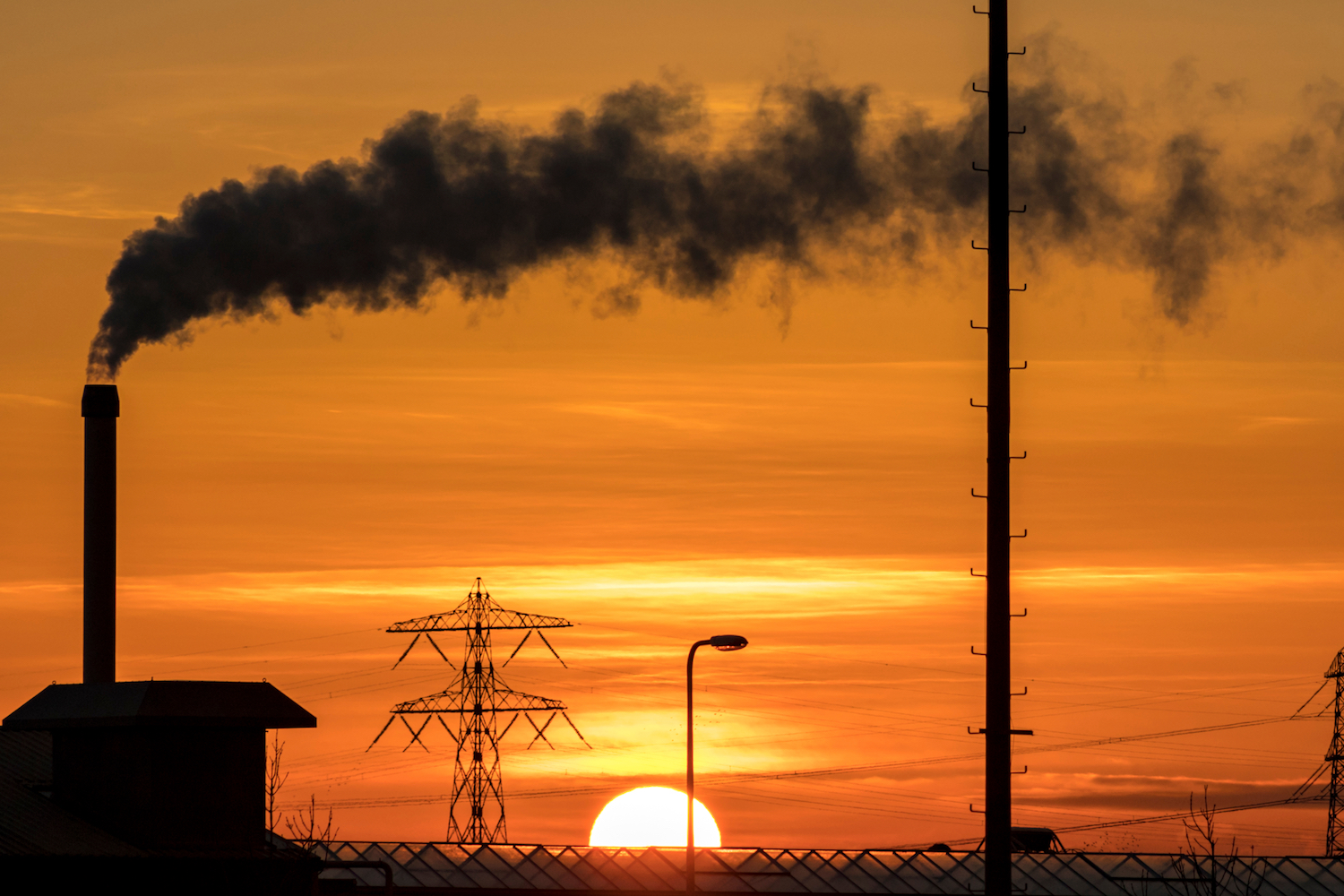Mountain of Evidence Confirms: Climate Change Is Really, Really Bad for Human Health and Well-Being

It's now beyond official: Greenhouse gases, such as carbon dioxide, pose a danger to public health and welfare, according to an exhaustive review that looked at 275 scientific studies published over the past nine years.
Researchers did the report to investigate whether the Environmental Protection Agency's (EPA) 2009 Endangerment Finding, which found that greenhouse gases pose a risk to human health, still held up. The new study showed that there is now even more evidence that greenhouse gases are harming human health and welfare. The investigation also found an additional four areas, not listed in the original report, in which greenhouse gases threaten people.
"There's absolutely no scientific basis for questioning the Endangerment Finding," review lead researcher Philip Duffy, president and executive director of the Woods Hole Research Center in Falmouth, Massachusetts, told Live Science. "The case for endangerment is stronger than ever." [6 Unexpected Effects of Climate Change]
What is the Endangerment Finding?
The original Endangerment Finding was a long time in the making. It began when Massachusetts and other states sued the EPA during President George W. Bush's administration, asking the agency to regulate greenhouse gases. In 2007, the Supreme Court ruled that not only does the EPA have the authority to regulate greenhouse gases under the Clean Air Act, but it also can't refuse to do so if these pollutants are found to endanger people.
"The Supreme Court said 'if you determine that greenhouse gases are dangerous, then you have to regulate them,'" Duffy said. "But, of course, the Supreme Court wasn't itself going to say whether greenhouse gases are dangerous. That's a scientific process not a legal one. So, the EPA undertook the scientific assessment of the dangerousness or not-dangerousness of greenhouse gases."
In December 2009, the EPA released that report, which found that greenhouse gases do endanger human health and welfare by causing climate change. The administration of President Barack Obama used this finding to implement new regulations, such as the Clean Power Plan and stronger vehicle mileage standards for cars and light trucks, Duffy said.
But now, people in and out of President Donald Trump's administration have discussed overturning or revisiting the endangerment finding, Duffy said. In response to these statements, Duffy and his colleagues decided to look at scientific studies published since the endangerment finding came out, to see whether the science strengthened or weakened the case for endangerment.
Get the world’s most fascinating discoveries delivered straight to your inbox.
What the science shows
The new review grouped the findings into different categories: public health, air quality, agriculture, forests, water resources, sea level rise, infrastructure and wildlife. The four new categories include ocean acidification, national security, economic well-being and violence. Here are more in-depth looks at several of them.
Overview of public health
People in more than 200 U.S. cities have an increased risk of premature death because of future warming, the researchers found. Extreme heat is linked with sleep loss, kidney stones, low birth weight, violence and suicide. Exposure to ozone and other air pollutants, including smoke from forest fires, can be bad for human health. Extreme weather events intensified by climate change can lead to physical trauma, disease outbreaks, interruption of health care delivery and mental health problems. Rising temperatures and carbon dioxide levels are also increasing the length of pollen season, which affects people with allergies. Certain crops are expected to produce fewer nutrients. Population displacement and armed conflict can also amplify risks to human health. [Photos Show Horrifying Scenes from California Wildfires]
Water resources
With less snowpack in the mountains, the West and Southwest may experience more droughts. Reduced snowpack can lead to reduced river flow, which can threaten rare and endangered species, such as salmon and wolverines. Climate change is also expected to erode water quality in the United States because of nutrient loading (such as from fertilizer or animal waste), especially in the Midwest and Northeast.
Sea level rise
High sea levels will increase the risk to coastal communities, economies and infrastructure, largely because of flooding, erosion and extreme events. These effects can lead to displacement through "climate gentrification," in which people living at higher elevations have higher-priced properties. The movement of goods among major port cities will likely be affected, too, causing economic disruptions. Sea level rise may also disrupt the U.S. military, as well as disaster and humanitarian relief efforts.
National security
The United States' existing security will likely need to change as the planet warms. For example, in the Arctic, reduced sea ice will clear the way for more Chinese trade routes and Russian oil and gas extraction, possibly causing tensions between these countries and the U.S., the researchers wrote.
Economic well-being
An increase of 1.8 degrees Fahrenheit (1 degree Celsius) over 75 years is expected to permanently reduce U.S. gross domestic product (GDP) by about 3 percent. The U.S. GDP is expected to be about 4 percent greater if warming is limited to 2.7 degrees F (1.5 degrees C) than if it's 3.6 degrees F (2 degrees C) above pre-industrial levels. Economies in poorer countries are expected to have an economic burden from climate change that is about five times larger than that of wealthier counties, the researchers found.
Violence and instability
Rising temperatures and increased rainfall can amplify violence and instability. In the U.S., higher temperatures are associated with higher rates of domestic violence, rape, assault and murder. Warmer periods may also elevate the risk of self-harm, including suicide, emerging evidence suggests.
Takeaway message
These findings "highlight this contrast between the science and the policies," Duffy said. "The scientific evidence is going in one direction, and the policies are going in exactly the opposite direction."
But this report shouldn't come as a surprise to anyone, said Jason Smerdon, a climate scientist at the Lamont-Doherty Earth Observatory of Columbia University in New York, who wasn't involved with the review.
"If you've been paying attention, the Endangerment Finding in 2009 was very well-reasoned, and it's only gotten stronger since that time," Smerdon told Live Science. "It's basically a tsunami of evidence in support of the fact. People have very clearly connected the changing climate, which we're causing, to the downstream impacts."
The review also drives home that climate change will affect everybody, not just people in distant lands.
"Reports like this all point out that every one of us will be impacted by climate change in different ways, and it's going to be in all of our backyards," Smerdon said. "It's not something that's going to be far away."
The review was published online yesterday (Dec. 13) in the journal Science.
- The Reality of Climate Change: 10 Myths Busted
- Top 10 Ways to Destroy Earth
- Photos of Melt: Glaciers Before and After
Originally published on Live Science.

Laura is the managing editor at Live Science. She also runs the archaeology section and the Life's Little Mysteries series. Her work has appeared in The New York Times, Scholastic, Popular Science and Spectrum, a site on autism research. She has won multiple awards from the Society of Professional Journalists and the Washington Newspaper Publishers Association for her reporting at a weekly newspaper near Seattle. Laura holds a bachelor's degree in English literature and psychology from Washington University in St. Louis and a master's degree in science writing from NYU.
 Live Science Plus
Live Science Plus





